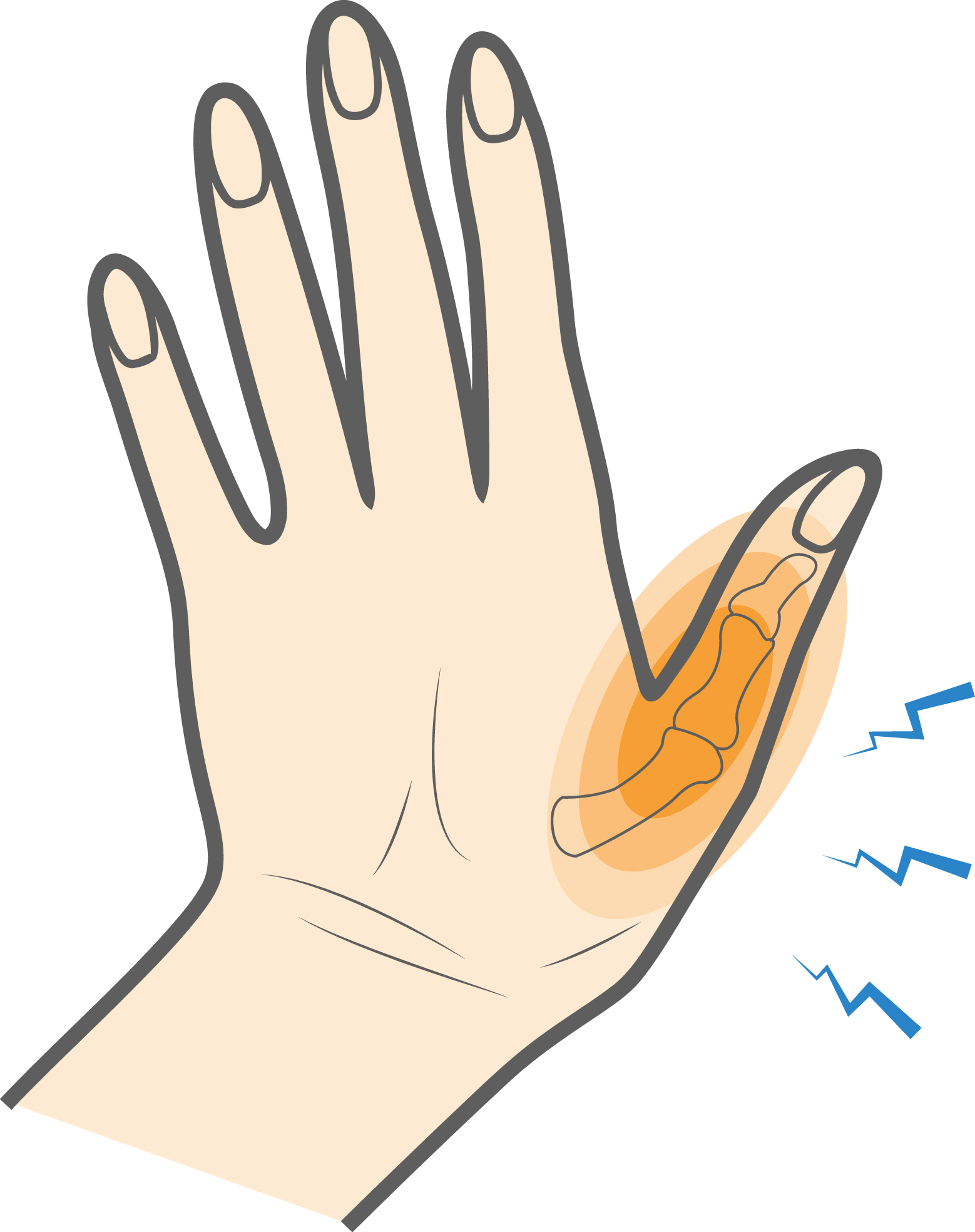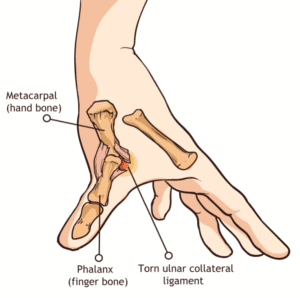A sprained thumb is a common injury among athletes. This injury happens when the ulnar collateral ligament (UCL) — tough and flexible tissue that connects bones in the thumb — gets stretched too far or tears. This injury is sometimes called “skier’s thumb” because skiers are prone to this injury when they fall with their hand strapped to a ski pole. The injury can limit movements, such as squeezing and gripping, needed for many sports.
Thumb Sprain (UCL Injury of Thumb) Symptoms & Treatment
A sprained thumb is a common injury among athletes. This injury happens when the ulnar collateral ligament (UCL) — tough and flexible tissue that connects bones in the thumb — gets stretched too far or tears. This is classified as a thumb ligament injury.
Overview
Overview

What causes Thumb Sprain (Ulnar Collateral Ligament (UCL) Injury of Thumb)?
A thumb UCL injury often results from a fall onto an outstretched hand that causes the thumb to bend away from the palm. A thumb UCL injury is most common in these sports:
- Skiing
- Snowboarding
- Basketball
- Football
- Baseball
- Racket sports (e.g., tennis or racketball)

Symptoms
Pain is a common symptom of a thumb UCL injury. The degree of pain and other symptoms will depend on the severity of your injury. Other common symptoms include:
- Pain that worsens when moving your thumb
- Bruising, swelling, and tenderness at the base of the thumb
- Thumb feels loose and not secure
- Weakness when grasping or squeezing with the thumb and index finger
- A lump and swelling on the inside of the thumb
When to see a doctor
If you suffer an injury to your thumb and have symptoms, even if they feel mild, you should see your doctor. Proper treatment of a sprained thumb is important so it doesn’t get worse over time. Your doctor will ask questions about your injury, as well as your medical history and physical activity. During the physical exam, he or she will move your thumb in different directions to test the stability of your thumb joint. This movement will help assess if your UCL is stretched or completely torn. X-rays or other imaging tests may be taken to determine the severity of your injury and whether any bones are broken.
Non-operative treatment
Treatment of a thumb UCL injury will depend on the severity of the injury. Mild and moderate sprains can be treated conservatively without surgery. These treatments include:
- Rest: Avoid activities, such as racket sports, that involve heavy use of the hands and gripping movements.
- Ice: Apply cold packs to reduce swelling.
- Compression: A compression bandage may be worn to reduce swelling.
- Medication: Nonsteroidal anti-inflammatory (NSAID) medication like ibuprofen can help to relieve pain.
- Cast: For moderate sprains, your doctor may recommend a bandage, splint, or cast to keep your thumb joint immobilized until it can heal.
- Physical Therapy: Gentle exercises can help reduce stiffness and increase mobility in your thumb joint.
Try these exercises to help address your condition:
Below is a PDF of the exercise program.
Surgical Treatment
For severe sprains, such as a complete rupture of the UCL, conservative treatment may not be enough to restore the stability of your thumb joint. In these cases, your doctor may recommend surgery to reattach the UCL to the thumb joint and repair fractured bones if needed. Patients who undergo surgery typically must wear a cast or splint for several weeks after the procedure to aid in their recovery.
Recovery
With proper diagnosis and treatment, athletes can expect to regain their full range of motion. Your doctor can advise you on exercises that aid in your recovery and ensure you are ready to return to play. Left untreated, thumb UCL injuries can lead to complications such as arthritis, chronic weakness, and compromised function of the thumb.
GET BACK TO WHAT YOU LOVE. FASTER
Frequently Asked Questions
How soon after a thumb UCL injury should treatment begin?
Ideally, treatment should begin immediately after the injury. Early identification and intervention helps prevent long-term instability and complications like arthritis.
What are the risks of delaying treatment for skier’s thumb?
Delaying treatment can lead to chronic thumb joint instability, reduced grip strength, and arthritis.
Can I still play sports with a thumb UCL injury?
If you’ve been diagnosed with a UCL sprain, continuing to play sports, especially those requiring grip, like tennis, baseball, or skiing, can make the injury worse. It’s best to rest the thumb and follow your doctor’s treatment plan. Returning to sports too soon can risk further damage, delay healing, or lead to long-term instability or weakness in the thumb.
What happens if a sprained thumb is left untreated?
Ignoring a thumb UCL injury, even a mild one, can lead to chronic joint instability, long-term weakness, and even arthritis in the thumb joint. A sprained thumb that doesn’t heal properly can limit your ability to grip, pinch, or perform daily tasks. That’s why early diagnosis and appropriate treatment are crucial, even if the pain seems manageable at first.

